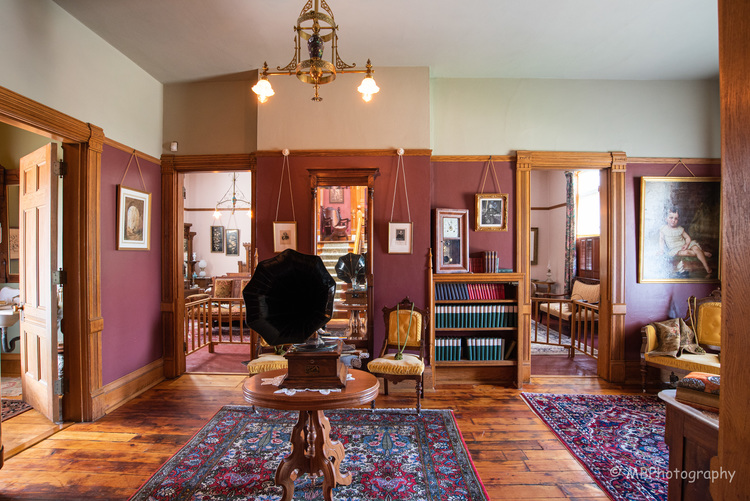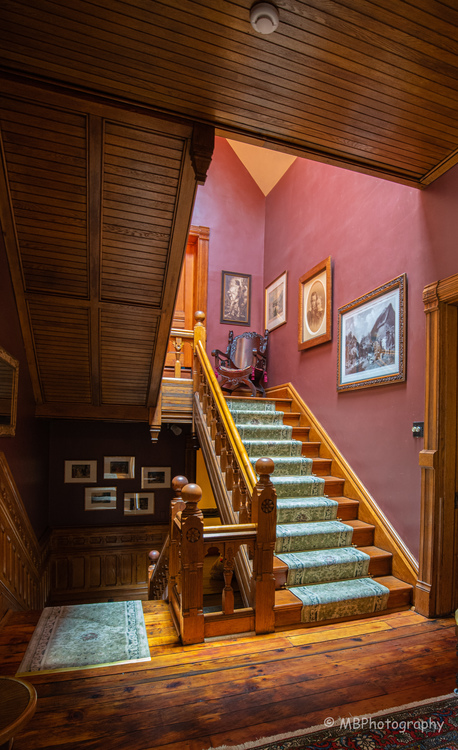Sitting Room
Sitting Room
The sitting room in Victorian homes was a private, informal space, used exclusively by the family. It was never used for entertaining as guests would never be invited upstairs. Instead, it was intended as a sanctuary from the outside world where some of the constraints of Victorian society could be figuratively, and literally, loosened (as with ladies' corset strings).
Notice that the second floor is not as lavishly appointed as the first. The flooring here is simple pine. The woodwork is less detailed. There was no need to impress anyone here.
Just like with the first floor, however, the walls and ceilings are painted. Here again, the colors have been restored to their original hues.
Above the second floor is the attic space. It was used exclusively as storage, holding all of the clothing, furniture, draperies, and the like that the servants would have changed with the seasons throughout the rest of the house. It would have also held changes of clothes because there are only two small closets, one in the master bedroom and one in Kitty's room. The attic space above the bathroom held the cisterns used to create running water in the rest of the house.
The skylight over the stairs is original. It provided natural light down the stair shaft. It could also be opened to quickly ventilate the house.
-
Biografia Giovanni Segantini
-
Storia del museo
-
Il Naviglio a ponte San Marco
-
A messa prima
-
Ave Maria a trasbordo
-
La raccolta del fieno
-
Costume grigionese (Ragazza alla fontana)
-
Autoritratto
-
Trittico
-
Mostra temporanea

